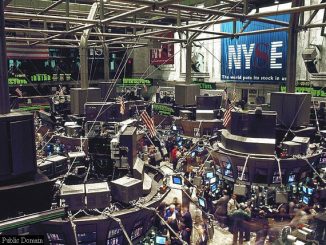- Market Resilience: Tom Lee highlighted the market’s resilience in 2025, noting its ability to recover from setbacks like tariff news, with January showing a 2.7% gain.
- Inflation and Policy Concerns: Lee discussed the complexities of inflation data, suggesting political influences, and expressed concerns about potential policy errors from both the Federal Reserve and the White House, although he noted that markets have taken recent tariff news in stride.
- Sector Performance: While the “Mag 7” stocks have underperformed in the early part of 2025, Lee sees strong potential in industrials, financials, and small caps, with the broader market dynamics favoring these sectors for outperformance.

Tom Lee, Fundstrat’s managing partner and head of research, appeared on CNBC’s “Closing Bell” to discuss the financial markets, key takeaways from 2025 so far, and the performance of the “Mag 7” stocks. Lee addressed a range of topics, including inflation expectations, tariff concerns, and potential policy risks, while offering insights into market resilience and investment opportunities.
Lee noted a recurring pattern in 2025 where markets tend to face pressure on Fridays, potentially leading to panic on Mondays. He referenced recent inflation data from the University of Michigan survey, which showed elevated expectations. However, he pointed out a political dimension to the data, suggesting that differing perceptions between Democrats and Republicans might be skewing the numbers. Lee emphasized that inflation headlines, while concerning, are often misinterpreted and tend to become muddled during election cycles.
When discussing broader economic concerns, including tariffs and their potential inflationary impact, Lee acknowledged the uncertainty they create. However, he argued that the bond market appears less worried, as evidenced by yields retreating from 4.8% to 4.5%. He suggested that markets have largely taken tariff-related news in stride, viewing it as more of a buying opportunity than a significant threat. Despite these uncertainties, Lee highlighted the market’s resilience, noting that it has consistently recovered from setbacks, such as the tariff-related dip in early 2025 and the carry trade unwind in August 2024.
Looking at 2025’s performance, Lee observed that January’s 2.7% gain and the market’s ability to rebound from sell-offs indicate a continuation of the bullish trends seen in previous years. However, he expressed concern about potential risks, including overly bullish sentiment and the possibility of a policy error from the Federal Reserve. He noted that the bond market still sees a greater than 20% chance of a rate hike in 2025, which he believes would be a mistake. Lee also acknowledged the risk of policy missteps from the White House but maintained that, so far, tariff-related fears have been more noise than substance.
Lee’s optimism about the market’s resilience extended to specific sectors. He pointed to the ISM manufacturing index moving above 50 as a positive signal for earnings dispersion and expressed confidence in industrials, financials, and small caps. He sees small caps, despite their underperformance so far, as poised for a strong year. Addressing concerns about a slow start to mergers and acquisitions in 2025, Lee remained optimistic, citing early-year recovery signs in business confidence metrics like the NFIB and ISM surveys.
On the topic of the “Mag 7” stocks, Lee acknowledged their mixed performance in the latest earnings season. Collectively, they have been a drag on the S&P 500 (SPX) in 2025, reflecting high expectations already priced into their valuations. He noted that while these companies continue to grow faster than the broader market, their relative softness — particularly in key areas like cloud revenue — has raised questions about their ability to sustain past outperformance. Still, Lee emphasized that the long-term secular growth drivers for these companies remain intact, even if their stocks may consolidate for a period.
Lee also highlighted the divergence within the “Mag 7,” pointing out that certain names, like Meta (META), have performed exceptionally well, while others face challenges. He suggested that the market’s reaction to earnings might sometimes be disproportionate, but the fundamental reasons for owning these stocks have not changed. Despite the softness in some areas, Lee believes the group’s absolute growth remains robust compared to the broader market.
In summary, Lee’s discussion underscored a market environment characterized by resilience and opportunity, even amid political and economic uncertainties. He remains cautious about potential policy errors but sees strength in sectors like industrials, financials, and small caps. While the “Mag 7” stocks face near-term challenges, their long-term growth prospects continue to justify their significance in the market.
WallStreetPit does not provide investment advice. All rights reserved.
- Bulenox: Get 45% to 91% OFF ... Use Discount Code: UNO
- Risk Our Money Not Yours | Get 50% to 90% OFF ... Use Discount Code: MMBVBKSM
Disclaimer: This page contains affiliate links. If you choose to make a purchase after clicking a link, we may receive a commission at no additional cost to you. Thank you for your support!





Leave a Reply